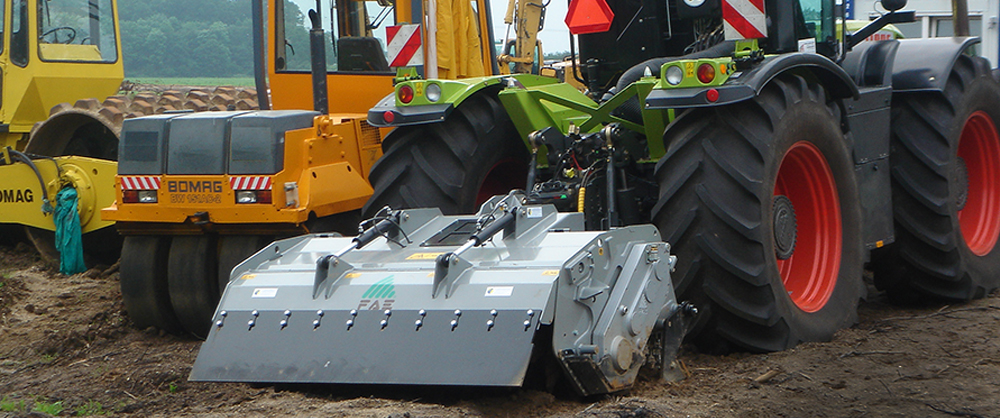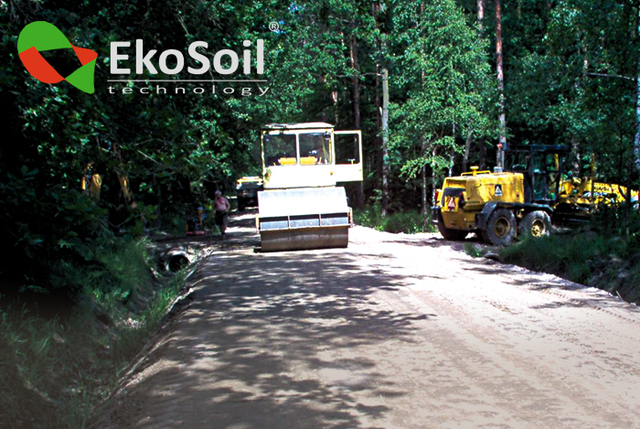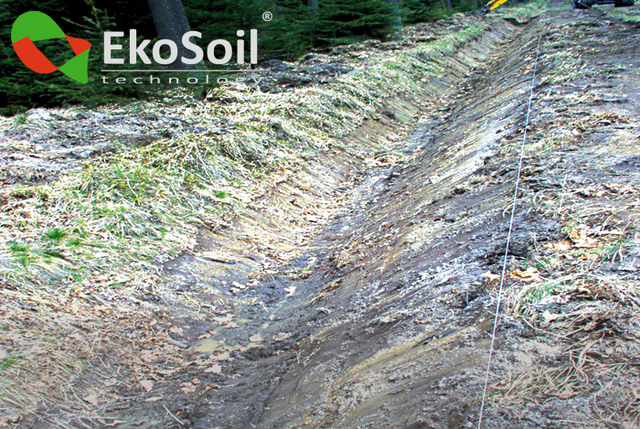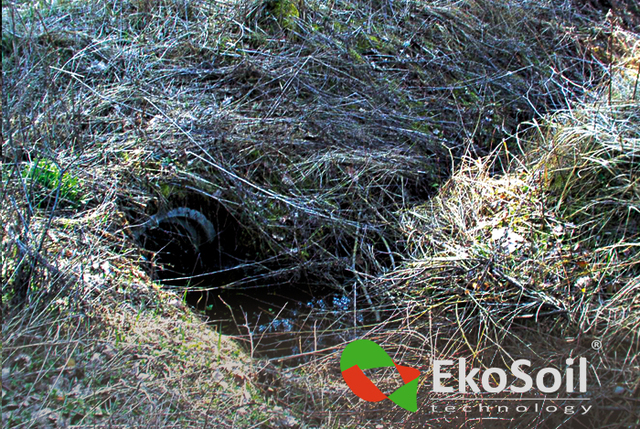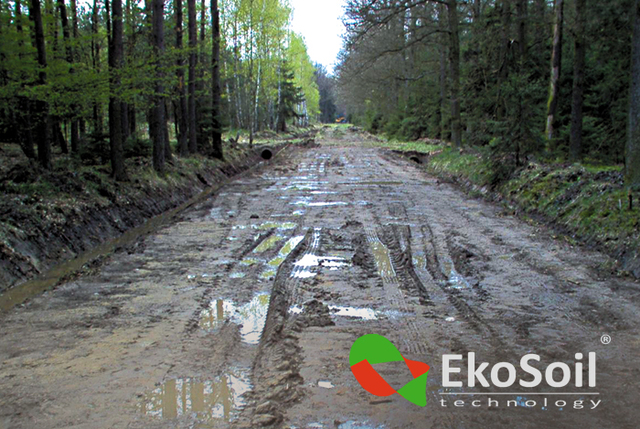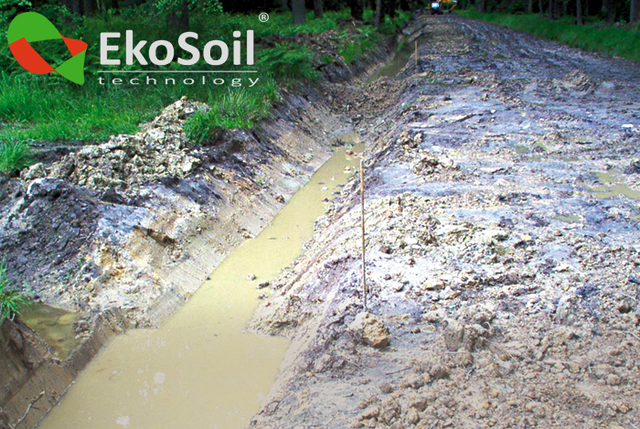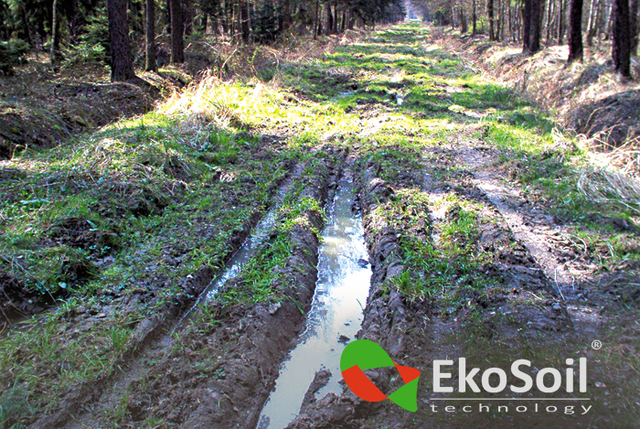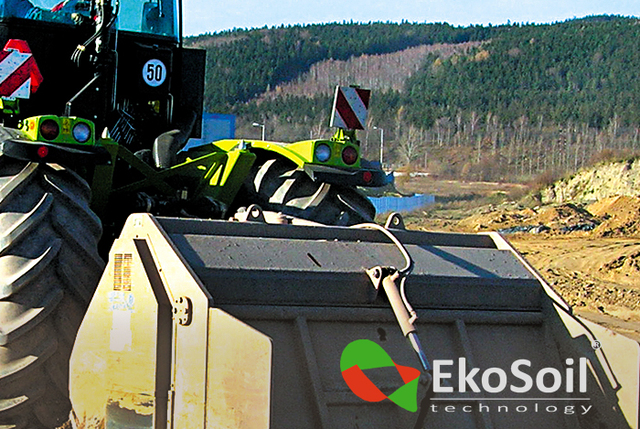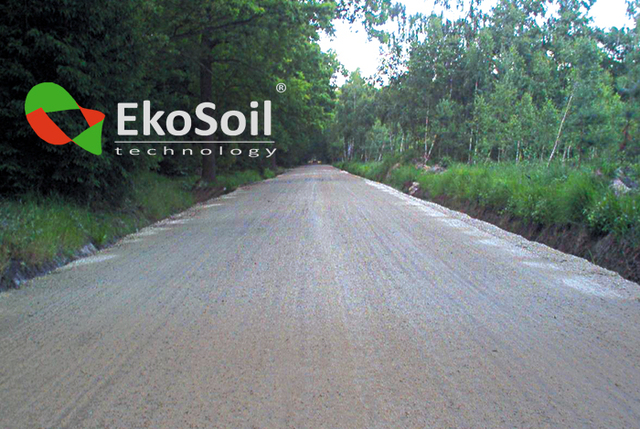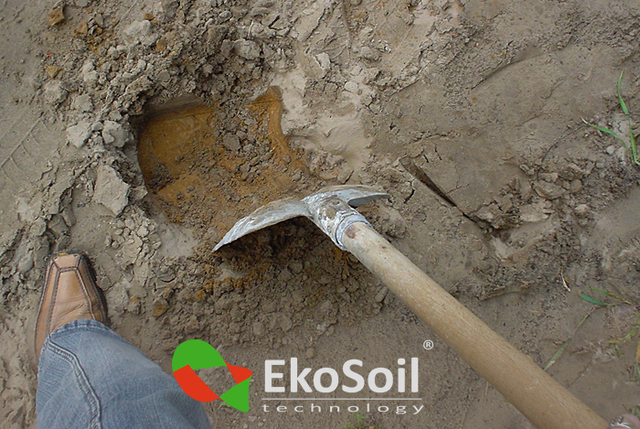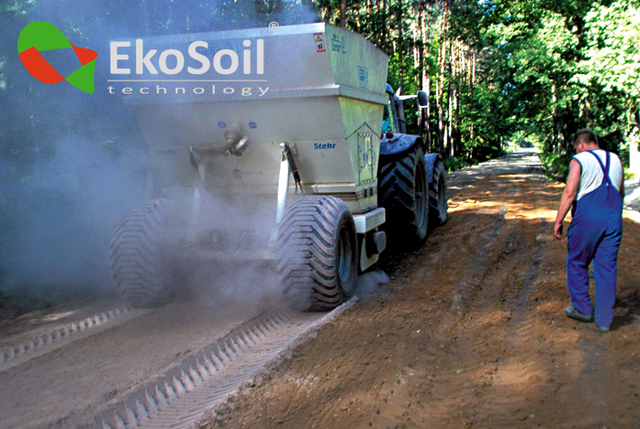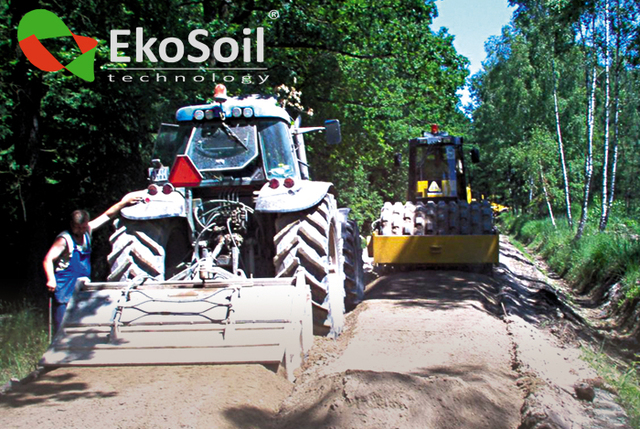Archiwa
ECO Roads System
Our solution is based on a permanent soil stabilization (including clay, loose, and swelling soil) employing chemical and hydraulic method. Generally the above mentioned types of soil are often exchanged which causes an increase in investment costs. ECO Roads System stabilization technology is based on soil hardening – during stabilization. During mineral-bituminous pavements overhauls deep stabilization and recycling is employed.
Broad application of ECO Roads System
Chemical and hydraulic stabilization technology is widely used in:
• Permanent clay and swelling soil stabilization (clays, loess);
• Reinforcing and improving subsoil;
• Reinforcing and improving subsoil during building construction;
• Auxiliary road foundation from subsoil;
• Construction of temporary soil-surfaced estate roads;
• Construction of building sites;
• Quick and fast engineering of estate and soil-surfaced roads with double wearing course finish;
ECO Roads System, in a short period of construction works, enables utilizing 100% of the subsoil, there is no need to use such additional materials as aggregate or to take away excavating material. It enables reducing the costs connected with road engineering.
Permanent soil stabilization: this includes stabilization of clay, swelling and loose soil which is hard to stabilize and is in fact useless for road engineering purposes, thus it has traditionally been replaced during construction works.
Ecological and cheap road engineering with improved surface (wearing course) made by double retreading with basaltic grit and asphalt emulsion – employing subsoil as a road foundation for enriched pavement. Soil-surfaced roads, estate roads, forest roads, yards etc. are built employing ECO Roads System technology utilizing 100% of subsoil.
Damaged pavements recycling is done by renovating old and damaged bituminous and mineral pavements employing ECO Roads System i.e. deep recycling accompanied by stabilization (35-40 cm of soil depth).
Clay soil stabilization employing chemical and hydraulic method guarantees:
• A shorter construction time
• Diminishing difficulties during construction works in city centres
• Resistance to frictions and grooves
• Increasing bearing capacity
• Profitable economic effect.









